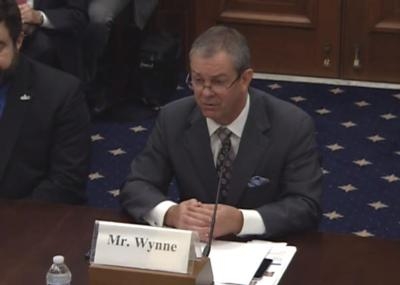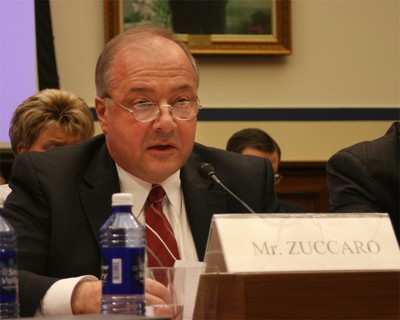FAA, AUVSI, HAI Weigh In On NAS Integration
The U.S. Senate Committee on Commerce, Science & Transportation Subcommittee on Aviation Operations, Safety and Security held a hearing Tuesday titled “Keeping Pace with Innovation – Update on the Safe Integration of Unmanned Aircraft Systems into the Airspace”. The purpose of the hearing was to provide a status update on efforts to integrate unmanned aircraft systems into the national airspace system without compromising safety.

"Keeping pace with innovation and technology, as well as the challenges, includes the space of drones," said subcommittee chairman Roy Blunt (R-MO) (pictured) in his opening statement.
"Are we working to ensure that regulations are balanced to ensure that innovation and growth continues, but public safety is at the forefront? At one point, many thought of drones as either a hobbyist’s tool for capturing images or as a sophisticated military technology. We know that drone technologies are improving at a rapid pace. Today, we have big tech companies investigating and investing in future drone-delivery services, drones are putting on light shows at events, precision agriculture is aided by drone use, and drones are putting eyes in places difficult for people to get to so safety checks can occur more frequently."
Earl Lawrence, director of the FAA’s unmanned aircraft systems integration office, represented the agency at the hearing. "The Department of Transportation and FAA’s vision for integration goes beyond the accommodation practices in use today by most countries, which largely rely on operational segregation to maintain systemic safety," Lawrence said in his prepared remarks. "Our goal is ambitious. We intend to fully integrate UAS into the most complex airspace system in the world, enabling UAS to operate harmoniously with manned aircraft, occupying the same airspace and using many of the same standards and procedures. With the support of this Committee, and the continued engagement of our stakeholders, we have made significant progress toward realizing this vision.
"The FAA is open for business. Using existing authorities, we are working with stakeholders to authorize increased UAS operations to the extent they can be accommodated safely. The small UAS rule, waivers and exemptions, and our traditional certification processes provide different pathways for UAS operators to access the NAS."
Speaking on behalf of the drone industry, AUVSI president and CEO Brian Wynne said for years, the association urged the FAA to use all available means to establish a regulatory framework for UAS. "And now, we have initial regulations governing civil and commercial UAS operations. The FAA’s small UAS rule, also known as Part 107, was implemented in August 2016, following years of collaboration between government and industry," Wynne said. "The rule established a flexible, risk-based approach to regulating UAS and reduced many barriers to low-risk civil and commercial UAS operations. This allowed businesses and innovators to begin to unlock the many economic and societal benefits of UAS.

"States and municipalities are not just utilizing UAS, they are also seeking to regulate their use. However, federal control of the airspace is a bedrock principle of aviation law that dates back well over 50 years, and is one of the reasons that the United States maintains an aviation safety record that is the envy of the rest of the world," Wynne (pictured) continued. "While the FAA must maintain ultimate authority over our skies, last year, the White House announced a UAS Integration Pilot Program that will provide an opportunity for state and local governments to collaborate with the UAS industry and the FAA to further develop a federal policy framework for integrating UAS into the skies above communities across the nation.
"The UAS industry is primed for incredible growth, thanks to industry representatives and government regulators nurturing innovation that helps businesses be competitive in the marketplace. We hope that these efforts can be sustained, that a long-term FAA bill can be passed by the Senate and signed into law by the President this year, and that together we continue to reach new historic milestones in integrating this technology into the national airspace and pave the way for regular and widespread UAS use."
HAI president and CEO Matt Zuccaro told the committee that the association, which is a part of the Drone Advisory Committee, that its members have been early supporters of UAS technology and see it as a new business opportunity for the helicopter industry. "Our members have been and will remain heavily engaged in unmanned operations in the coming years. Many have already established UAS business lines within their organizations," Zuccaro said. "This integration is occurring as we speak, but the concept of integration is not new. We’ve been integrating numerous aircraft categories into the airspace since aviation began. At one point, jets were new. Helicopters were new. Yet these aircraft were safety integrated into the NAS. We do not need to reinvent the wheel."

He touched on the FAA's preemptive authority, the need for training standards, airspace access and BVLOS operations. He said the members of the association feel a certification program for the UAS category of aircraft is necessary. "This will provide for standardized manufacturing processes and a common level of quality. "This is an important issue when considering the possible effect of UAS operations on persons and property," Zuccaro (pictured) said. "We all acknowledge that UAS technology is constantly improving and changing at breathtaking speeds. The FAA needs to have a certification process that can efficiently respond to the fastpaced changes in the industry. A nimble regulatory approach is essential so that industry is not held up waiting for government oversight to catch up to new technologies. A flexible certification system will ensure that safety is preserved while allowing manufacturers to certify and deploy their latest technologies to the field."
(Images from file)
 ANN's Daily Aero-Term (04.20.24): Light Gun
ANN's Daily Aero-Term (04.20.24): Light Gun Aero-News: Quote of the Day (04.20.24)
Aero-News: Quote of the Day (04.20.24) ANN's Daily Aero-Linx (04.21.24)
ANN's Daily Aero-Linx (04.21.24) Aero-News: Quote of the Day (04.21.24)
Aero-News: Quote of the Day (04.21.24) ANN's Daily Aero-Term (04.21.24): Aircraft Conflict
ANN's Daily Aero-Term (04.21.24): Aircraft Conflict





